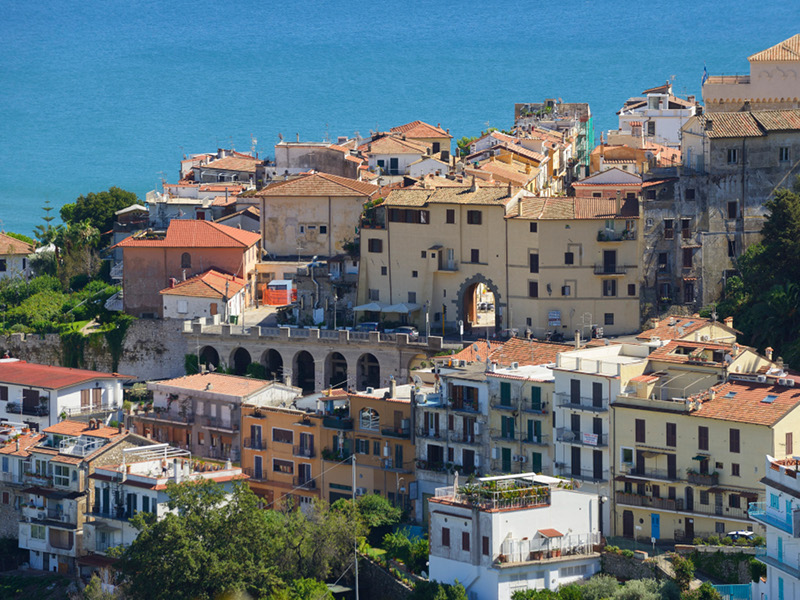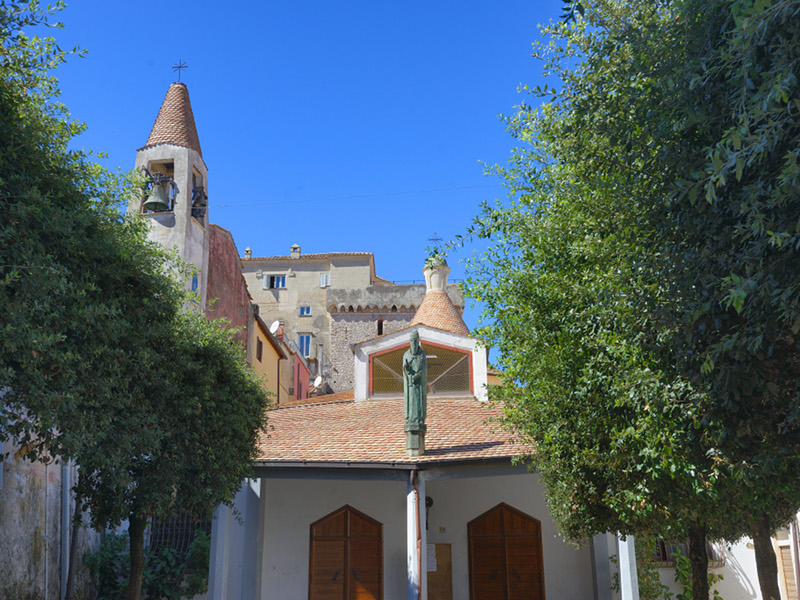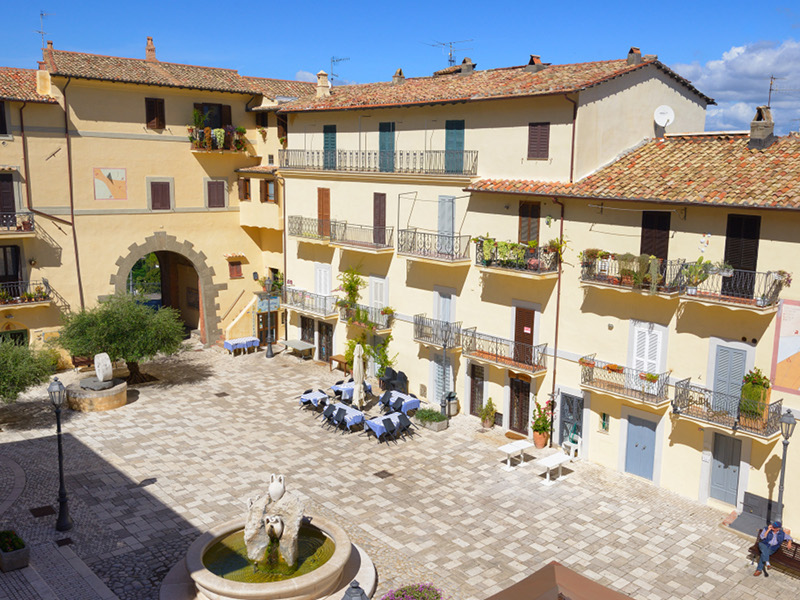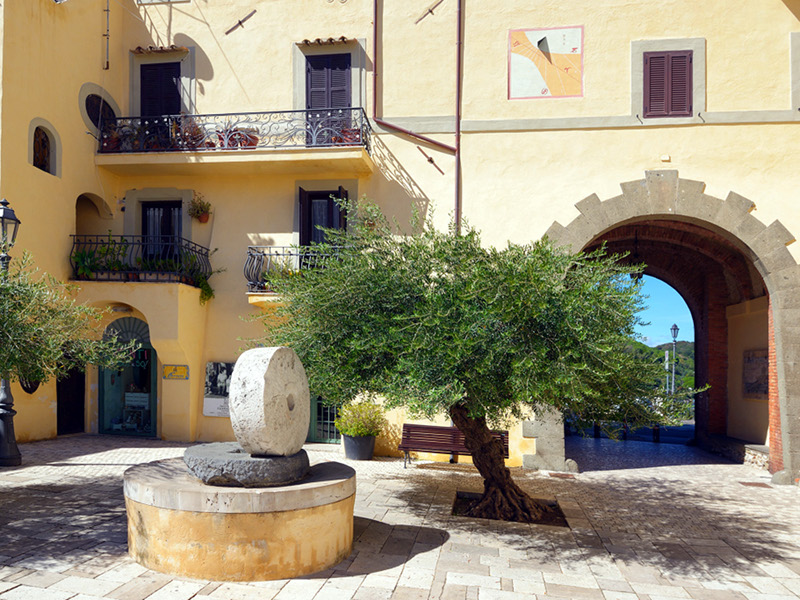San Felice Circeo
Gathered together within its walls, San Felice Circeo was built on a natural platform about 100 metres above the sea. The town's history is very ancient, and begins with the Neanderthal man. Throughout the centuries, the Circeo area has been a Roman colony, a property of the Templars during the Middle Ages, a fief of the Caetani family, and finally a fortress of the Papal States.
Circeo is also a protagonist in the myth of Ulysses and Circe the sorceress, told in Homer's Odyssey.
The Tower of the Templars on San Felice Circeo's main square was built between 1240 and 1259. Its characteristic clock, which was earlier placed at the great door of the baron's palace, was installed on the tower at the beginning of the 19th century. The yard of the baron's palace can be accessed through an archway on the square's right side; the Caetani family built the palace, which today houses the Town Hall, in the 14th century.
Monuments and places of interest
Papal towers
In the second half of the XVI century, Pope Pius IV ordered the Caetani family to build four towers along the promontory's cliff, as a defence against the continual pirate incursions: the Paola, Moresca, Cervia and Fico Towers. The summits of the round-plan, three-storey towers were also shielded on the side of the Promontory, to protect the soldiers against possible attacks from the mountain. Torre Paola is the only one to have kept its original structure: English ships destroyed the others in 1809.
Lighthouse
The lighthouse of Capo Circeo, built in 1866, is about three kilometres from San Felice Circeo. The building is on the slope of the Promontory known as "Quarto Caldo", and consists of a house and of a 18-metre tower.
Acropolis
The acropolis, probably built at the beginning of the 3rd century b.C. on the rock overlooking the town, was the last stronghold of the city of Circeii.
Caves
Evidence of human presence in the area of San Felice Circeo dating back to the Middle Palaeolithic was found in caves and under rock overhangs all around Mt. Circeo.
Exhibitions
Exhibition "Homo Sapiens e Habitat"
The exhibition was planned and started in 1978 by the Study Centre for Quaternary Ecology, with the support of the agencies for tourism promotion of Latina and of San Felice Circeo, and in collaboration with Universities, Circeo National Park and local authorities. It occupies 5 rooms, and its contents are valuable to understand Prehistory, both in general and with respect to the Circeo territory.

San Felice Circeo
(photo by Marco Buonocore)

San Felice Circeo
(photo by Marco Buonocore)

San Felice Circeo
(photo by Marco Buonocore)

San Felice Circeo
(photo by Marco Buonocore)